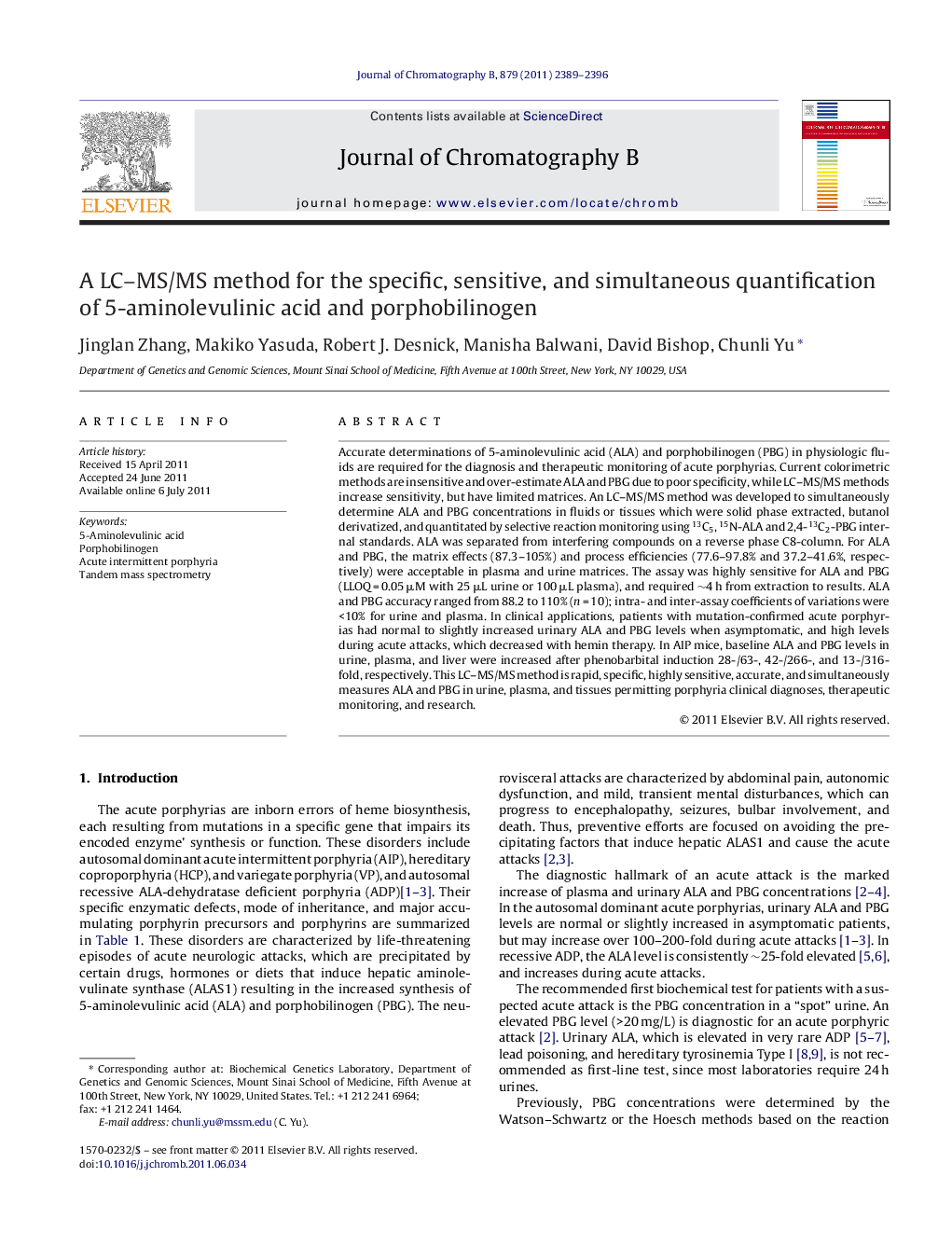| کد مقاله | کد نشریه | سال انتشار | مقاله انگلیسی | نسخه تمام متن |
|---|---|---|---|---|
| 1213316 | 966877 | 2011 | 8 صفحه PDF | دانلود رایگان |

Accurate determinations of 5-aminolevulinic acid (ALA) and porphobilinogen (PBG) in physiologic fluids are required for the diagnosis and therapeutic monitoring of acute porphyrias. Current colorimetric methods are insensitive and over-estimate ALA and PBG due to poor specificity, while LC–MS/MS methods increase sensitivity, but have limited matrices. An LC–MS/MS method was developed to simultaneously determine ALA and PBG concentrations in fluids or tissues which were solid phase extracted, butanol derivatized, and quantitated by selective reaction monitoring using 13C5, 15N-ALA and 2,4-13C2-PBG internal standards. ALA was separated from interfering compounds on a reverse phase C8-column. For ALA and PBG, the matrix effects (87.3–105%) and process efficiencies (77.6–97.8% and 37.2–41.6%, respectively) were acceptable in plasma and urine matrices. The assay was highly sensitive for ALA and PBG (LLOQ = 0.05 μM with 25 μL urine or 100 μL plasma), and required ∼4 h from extraction to results. ALA and PBG accuracy ranged from 88.2 to 110% (n = 10); intra- and inter-assay coefficients of variations were <10% for urine and plasma. In clinical applications, patients with mutation-confirmed acute porphyrias had normal to slightly increased urinary ALA and PBG levels when asymptomatic, and high levels during acute attacks, which decreased with hemin therapy. In AIP mice, baseline ALA and PBG levels in urine, plasma, and liver were increased after phenobarbital induction 28-/63-, 42-/266-, and 13-/316-fold, respectively. This LC–MS/MS method is rapid, specific, highly sensitive, accurate, and simultaneously measures ALA and PBG in urine, plasma, and tissues permitting porphyria clinical diagnoses, therapeutic monitoring, and research.
Journal: Journal of Chromatography B - Volume 879, Issue 24, 15 August 2011, Pages 2389–2396